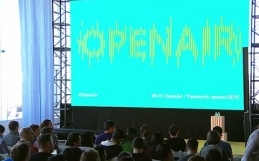Ted Willke’s work at Intel Labs has seen him use well known toolsets to bring order to the chaos of big data, guiding his teams through massive updates to graph based machine learning and data mining software to allow Data Scientists to extract the best possible value from data sets. This must have been as good a preparation as any for the type of work which was to come.
At MLConf, Willkes gave a fascinating insight into the work that is currently being done at Intel to be able to derive real-time feedback to a patient on how the brain is functioning. Just to highlight the complexity of the challenge, the neocortex has 125 trillion synapses, the gaps which allow the passage of neurons, presenting more ways to organise the mammalian brain than there are stars in the known universe.
At a high level, this works by mapping the brain in voxels, or three dimensional pixels using an MRI machine, which give the metabolic rate of the brain over time which presents data that can be used. Willkes says, “Now that we have that idea we can take this real-time data and we can do a classifier that potentially looks at the patterns of those voxels over time and do all sorts of interesting traditional machine learning on that data.”
Under trials Willke says that it will then be possible to see what part of the brain is related to particular tasks like visual processing and start to map the mind down to the deep hidden layers by making correlations between what a patient or test subject is doing and how the voxels are activated.
At the moment this type of work is done offline by analysing the results of classifier testing but what Willke’s work is interested in is being able to look at the cause and effect of how types of behaviour could for example improve someone’s attention using a real time neural feedback pipeline, which could open up a whole new world for therapy.
Using an MRI scanner, one of the current experiments used to demonstrate the almost spooky instant type of feedback work that Intel is doing is to give volunteers images which are overlapped of both faces and environment and telling the to concentrate on faces. The images are presented repeatedly and if the volunteer is not concentrating enough on what they are told to, then the image will fade forcing them to concentrate harder.
Intel use something called the Math Kernel Library to supercharge processor power and cope with what the vast levels of data and vector mapping with their powerful next generation processors in the Xeon Phi family allowing work to be carried out as a step towards being able to help people that suffer from mental disorders and helping people improve the performance of the brain.




